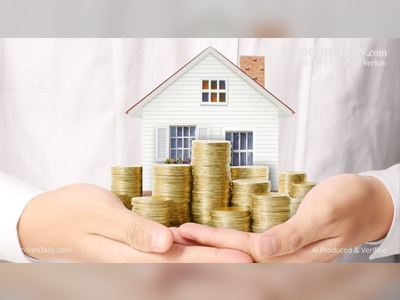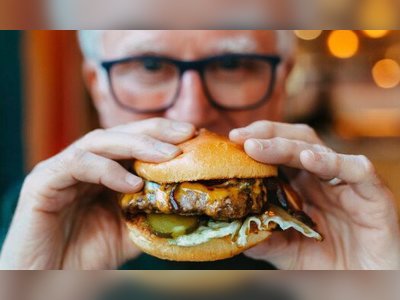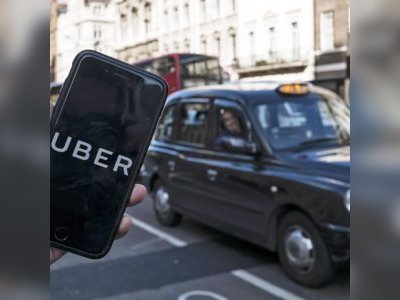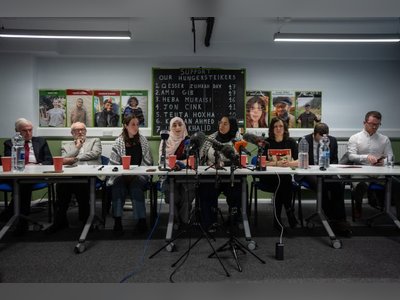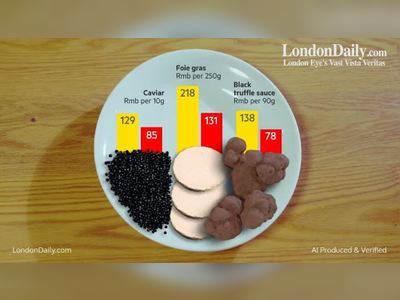Why are young Asian-Americans killing themselves? Group’s emotional battle against cultural and social pressure in America
Katherine Tong recalls sitting in a church pew in 2013, listening to a eulogy from a father who had lost his son to suicide. She thought: “Thank God our family is okay”.
But 6 months later, her stepson, 17-year-old Evan Tong, would end his life the same way.
The family knew that Evan was depressed, but dismissed the possibility that he might resort to suicide, a subject that remains taboo in many Asian households.
Although suicide rates among young Asian people are lower than those for the overall US population, the number has grown significantly in the past decade. For Asian-Americans and Pacific Islanders (AAPI) aged 20-24, the suicide rate increased from 7.4 per cent to 13.6 per cent between 2011 and 2018, according to data from the Centres for Disease Control and Prevention (CDC).
Suicide was also the leading cause of death among AAPIs aged 15-24, according to CDC. Specifically, for those 20-24, suicide accounted for 33.1 per cent of AAPI deaths in 2017 – the highest of all ethnicities. By contrast, the number was 21 per cent among Caucasians in the same age group.
Jorge Wong, a clinical psychologist at Palo Alto University in California, called the statistics “alarming”.
Although it is unclear what factors are behind the growing trend among young Asians, Wong cited a couple of cultural and social changes that might be taking a toll on the group’s mental health and exposing Asian-Americans to risks of suicide.
“Social media is something that everybody is looking at, especially the younger generations,” Wong said. The “ideal” lives presented on social media would bring pressure and cause self-doubt among users, he said, adding that the spread of suicidal messages and online exposure to suicide cases could also be exacerbating the problem, especially for teenagers.
The rise of racist ideology and discriminatory rhetoric within and beyond the United States in recent years may also play a role, Wong said.
Although Asian-Americans often are perceived as high achievers in the US, mental health experts and advocates suggested that the combination of heavy pressure to succeed and a conflicted cultural identity is threatening the group’s mental health.
On top of that, the strong stigma associated with mental illness in Asian households could discourage young people from seeking professional help, with deadly consequences.
Eric Lu fit the profile of a typical Asian “golden” child – he was a Harvard graduate and a medical school student with the potential to become a wealthy doctor – before suffering severe depression and harbouring suicidal thoughts in 2014.
Born in Taiwan, Lu moved to Texas with his family at age 3. Like many second-generation Asian-Americans, his family stressed values such as obedience to his elders and a strong focus on academic success. Many of these principles, he said, conflicted with the American perspectives he was exposed to at school.
“I don’t think growing up I really developed my own sense of identity,” he said. Instead, he learned to be flexible and to “fit into the prevailing mindset”, whether at home or at school; his school was predominantly white.
He lived in harmony with this “dual identity” until his first year at Harvard Medical School. At that time, he found his true passion in the film industry and took a leave from school to pursue his dream of making films.
But his immigrant parents could not endorse his bet on an “unstable career”. They pushed back, threatened to cut off his financial support and to even disown him. Fights over Lu’s career choice lasted for “two to three hours” every day during his leave of absence from school.
Lu – who now is a full-time filmmaker – said he felt “very torn” between his family values and his new-found sense of self. Eventually, he would give in and return to medical school. Soon afterward, he slipped into a depression and began having suicidal thoughts. For more than a month, he kept thinking of jumping off the balcony of his 17th-floor flat.
Lu’s experience reflects the anxiety that young Asian-Americans can feel from the pressure to achieve academic and professional excellence. A recent Indiana University study found that school problems are twice as likely to contribute to suicides for AAPIs under age 25 as for their white counterparts.
Professor Y. Joel Wong, who led the study, said the result stemmed from “especially high expectations” of accomplishment shared by both Asian students and their parents.
But the pressure came not just from Asian households, but the outside world.
The “model minority” myth, which casts Asians as diligent, well-educated and even well-paid achievers, is a prevalent stereotype that second-generation Asian-Americans face. A similar view labels Asian students as quiet, obedient and weak at social relations.
George Qiao, a college mental health advocate in Boston, said such stereotypes fostered self-doubt among Asian youths; a group, he said, which once included his friends and himself. “Even when you do succeed, nobody thinks you're worthy of a celebration. People will say, ‘Oh, you aced all tests? It’s because you’re an Asian’.”
A direct impact of the identity mist surrounding the two cultures is a sense of isolation and insecurity. “There’s a wall separating me from the white Americans,” Qiao said. “At the same time, I have abandoned a lot of Asian heritage.”
That view was echoed by Larissa Lam, a motivational talk show host who said many of her Asian teenage audiences felt lonely and lacked a sense of belonging over “not being quite American enough and not being quite Asian enough”.
“That wears mentally and emotionally in the long run,” said Jorge Wong, the clinical psychologist. Researchers, he added, regard having confidence in one’s cultural origin and identity – the so-called positive cultural identity – as a crucial building block for healthy development in teenagers.
Young Asians feeling torn between Western and Eastern values may reject their cultural origin, he said.
By the time Katherine Xie ended up in an accident and emergency room because of a drug overdose, she had been enduring depression silently for four years.
Xie remembered her parents’ irritated response when she first proposed the idea of going for counselling as a troubled 14-year-old.
“It's not real. Get over it!” they said, two immigrants angry and disappointed at their daughter’s failure to handle “hardships” on her own.
After that, Xie grappled with her intense emotions without help, as her parents suggested. She concealed her feelings in front of others, but her depression deepened day by day.
When alone, she would cut her skin in an attempt to transfer the pain away, or would rely on pills, a move that nearly ended her life. “I just didn't have any healthy way to cope with these extreme feelings,” she said.
After her recovery, Xie shared her story with an online health care magazine. Her article received more than 2,800 likes and touched off comments from young Asians on how hard it was to seek help from family members for mental distress.
“How many times have I brought up needing help … and I'm met with, ‘Oh, you'll be fine’,” one comment read.
Owing to a reluctance to discuss mental issues, Asian-Americans are three times less likely than whites to seek help from mental health services. While the stigma associated with mental illness is cross-cultural, it has deep roots in the Asian-American community.
In Asian circles, it is considered rude to ask about one’s mental health status, because it causes that person to “lose face”.
First-generation Asian immigrants, who were raised under traditional Asian values of endurance and resilience, tend to use silence as a coping mechanism, according to Jorge Wong. However, second-generation Asians growing up in Western culture often fail to share that behaviour. As their emotions get suffocated, their internal demons grow stronger.
That situation prompted Lu, the filmmaker, to produce a documentary on the impact of a suicide on an Asian-American family. The story centres on Luke Tang, a Harvard second-year student who shocked family and friends by killing himself in September 2015.
In the 26-minute film, Looking for Luke, Luke’s parents endeavour to understand why their beloved son has taken his life. By talking to his close friends and reading his journals, the parents find signs of the severe depression that had weighed on their son, and which could have been identified and treated much earlier.
Lu said he had much in common with Luke. “Every part, really to every part,” he said. “I knew that there are a lot of people out there who are like Luke or me. They might not make it out of their suffering.”
Lu said he hoped the film could “give permission and space for people”, especially children and parents, to talk openly about underlying mental distress and break the “s” word (for suicide) taboo.
Since April 2017, Looking for Luke has had at least 30 screenings in 14 cities across the country. Each screening has been followed by a discussion that provided contact information for counselling services.
As Lu expected, the film has helped get many Asian-American young people and their families talking about mental health issues. “A lot of them asked me: How can I help my child with his depression?” he said.
Organisations such as Didi Hirsch Mental Health Services in Los Angeles are offering suicide prevention resources – from education outreach to suicide hotlines – in Asian languages, to fill the lack of culturally sensitive mental services for the population.
Christopher Jun is one of the nonprofit’s educators who does one-on-one talks in the local Korean community every week on suicide prevention. “The community is slowly opening up,” Jun said.
The younger generation tends to be willing to discuss mental health issues, Jorge Wong said, but more needs to be done to prevent them from turning to suicide.
Given the impact that parents can have on their children’s way of thinking, “it is very important that parents express their love”, said Y. Joel Wong, the leader of the Indiana University suicide rate study. “Parents should tell their kids that, regardless of how you do, I still love you.”
Lam, the motivational talk show host, advises young Asian-Americans to embrace both sides of their identity. “Think of it as a strength, not a weakness … We have something special that defines us: We can be a bridge to cultures,” she said.
But most important, educator Christopher Jun said, is this advice: “When you are not feeling well, seek help!”




